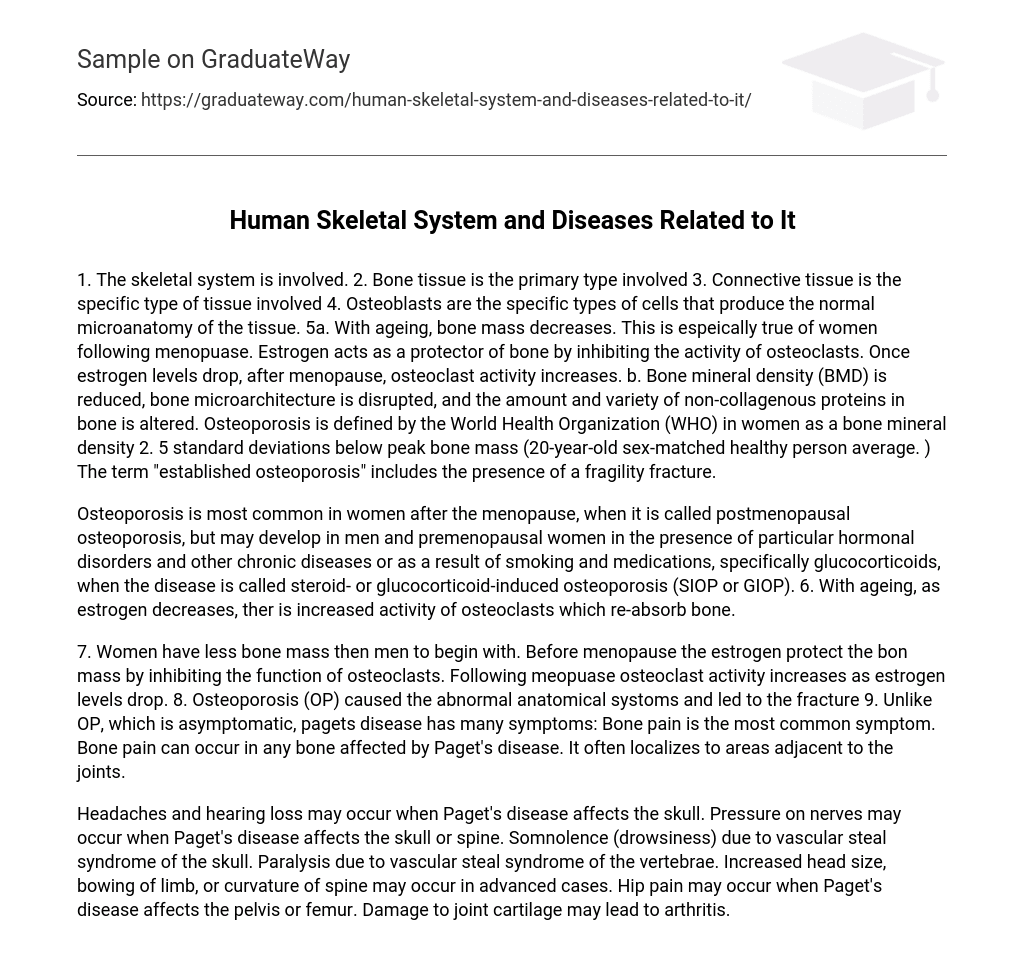The skeletal system is primarily composed of bone tissue, a type of connective tissue produced by osteoblasts. As individuals age, especially postmenopausal women, their bone mass decreases. Estrogen has a protective role in maintaining healthy bones by inhibiting osteoclast activity. However, after menopause when estrogen levels drop, osteoclast activity increases. This ultimately leads to a decrease in bone mineral density (BMD), changes in bone structure, and alterations in the quantity and types of non-collagenous proteins present in bones. According to the World Health Organization (WHO), women with osteoporosis have a BMD 2.5 standard deviations lower than the average peak bone mass of a healthy person matching their sex at age 20. The diagnosis for “established osteoporosis” requires the presence of a fragility fracture.
Osteoporosis, also known as postmenopausal osteoporosis in women after menopause, can affect men and premenopausal women with hormonal disorders or chronic illnesses. Smoking and specific medications like glucocorticoids can play a role in the development of osteoporosis, specifically referred to as steroid-induced osteoporosis (SIOP) or glucocorticoid-induced osteoporosis (GIOP). As people age and estrogen levels decline, there is an increase in the activity of osteoclasts responsible for bone re-absorption.
7. Initially, women have lower bone mass compared to men. During pre-menopause, estrogen plays a protective role in preserving bone mass by inhibiting the function of osteoclasts. However, after menopause, the levels of estrogen decline and this leads to an increase in osteoclast activity.
8. Abnormal anatomical symptoms and fractures are caused by osteoporosis (OP).
9. Unlike the asymptomatic nature of OP, Paget’s disease manifests with various symptoms, with bone pain being the most common symptom. The occurrence of bone pain can be observed in any of the bones affected by Paget’s disease and is often concentrated near the joints.
Headaches and hearing loss can result from Paget’s disease affecting the skull, while pressure on nerves can occur when Paget’s disease affects the skull or spine, causing somnolence (drowsiness) due to vascular steal syndrome in the skull and paralysis due to vascular steal syndrome in the vertebrae. Advanced cases of Paget’s disease may lead to increased head size, bowing of limbs, or curvature of the spine. When Paget’s disease affects the pelvis or femur, it can cause hip pain, and damage to joint cartilage may result in arthritis.





